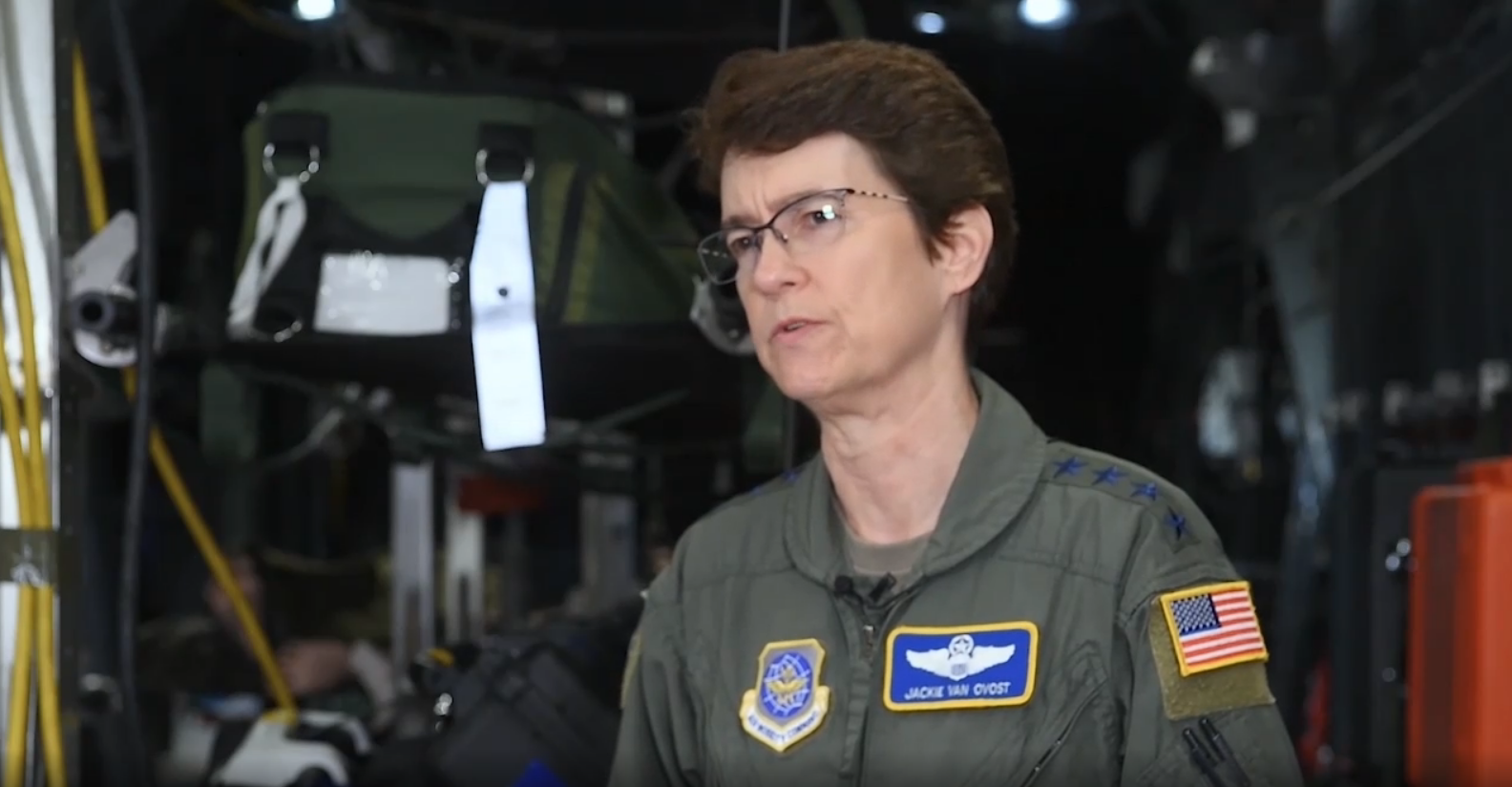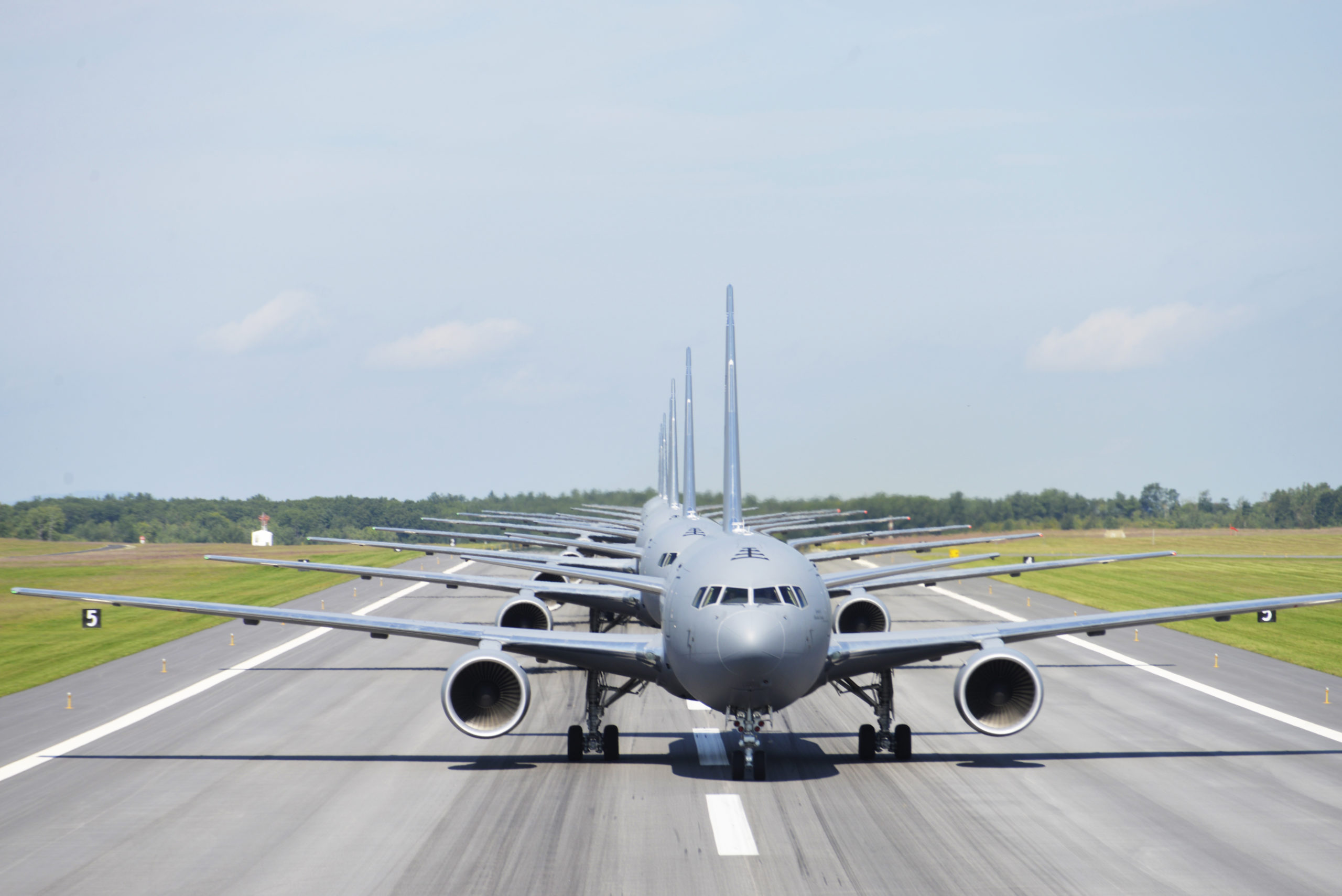See my above post: how much more fuel SHOULD Boeing add to the KC-46 to match the heavier, draggier and more cumbersome gigantic MRTT offload fuel capacity as pushed frwd by LM?
Well, if I read the AF mag article correctly, where they're talking about replacing the KC-135, none. Granted the KC-46 has about 20,000 lb. of useful load left with currently full tanks (see numbers below). So that's the trade space without an increase in gross weight, bigger engines, etc. if you want to go there, assuming that more tanks would fit/not add too much extra weight, blah, blah, blah...
Again, this is about a decade old, but when I was aircrew (sometimes on -135's) the word was they usually didn't use the full 202,000 lbs. of gas and did not even pass all of the reduced load they usually carried. If that's held true, then the -46's 212,000 lbs. is probably good enough. Granted Airbus and their latest American partner will print on a nice glossy brochure the cases where it does something the Boeing product doesn't.
I know, folks will flame away, read on if you want a bit of insight into the kind of analysis that gets to get to a semi robust answer, which I did a while ago on another forum...
A long while back I got my hands on both A330 and B767 flight manuals and compared the results. Memory fades, so no exact numbers, but the bigger jet burn quite a bit more gas than the smaller one, both can at least match the -135 if memory serves. ISTR that for cases with less than a full load, closer to a base the 767 does the mission and burns less. The further out/up the range/offload the 330 gains an advantage, I forget where the crossover was. Then off course there's how much ramp space get used, take-off rolls for reduced weights because both have 9,000+ ft. takeoff rolls at max gross. Of course count on the competitors to mix apples and oranges. Then off course most folks won't try to download a flight manual, even fewer can use it to compute a mission profile, anyhow I rant...
What might be useful to make a comparison is to evaluate against a requirement of say takeoff from a 12,000 ft. runway at ISA +20, offload 320,000 lbs. in 2 tracks in a continuous 8 hr. period (20,000 lbs. per/track/hr.), 500 nm from the base with IFR reserves + divert. How many airframes needed, how much ramp foot print, how much gas burned, how many maintenance hours required in order to meet the above for 30 days of continuous operations?
Comparison of the different tankers, KC-46 has a max gross weight of 415,000 lb., about 233,000 lb. useful load and 212,000 fuel capacity as is. The LMXT is 532,000 lb. max gross and 270,000 of fuel (KC-45 was 265,000 kb empty weight. A330 MRTT is 275,000 lbs.) The KC-135 for reference had a 322,000 lb. gross weight with 202,000 lb. of fuel and 124,000 lb. empty weight. Also, just in case someone wants to ask, "What about the deployment drag with a KC-10," here's the -10's numbers, 590,000 lb. gross weight, 356,000 lb. fuel load and 241,000 lb. empty weight.
Anyhow, once again wrote a book to not answer a seemingly easy question.

 www.airforcemag.com
www.airforcemag.com



